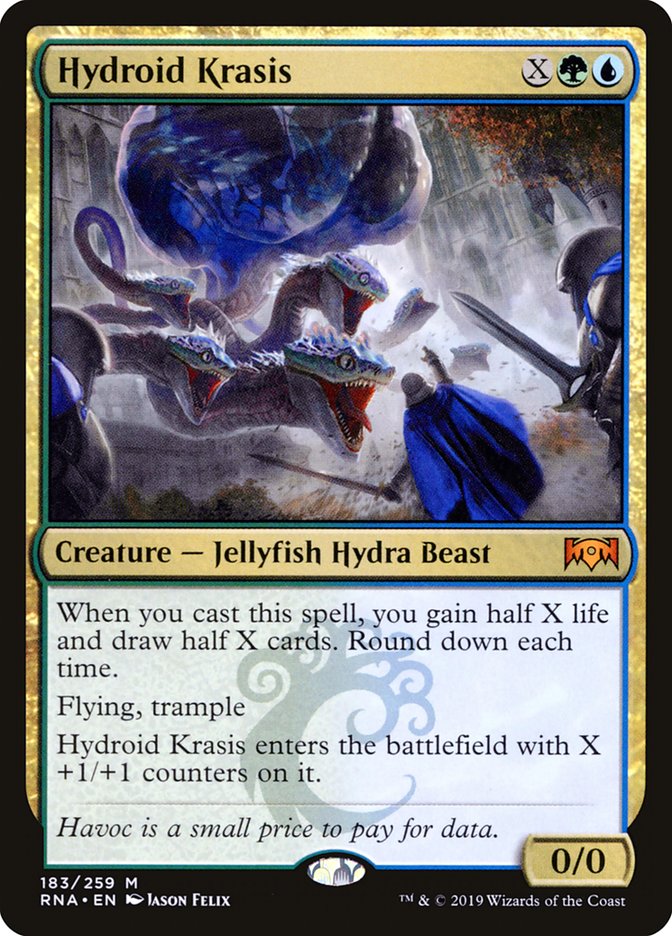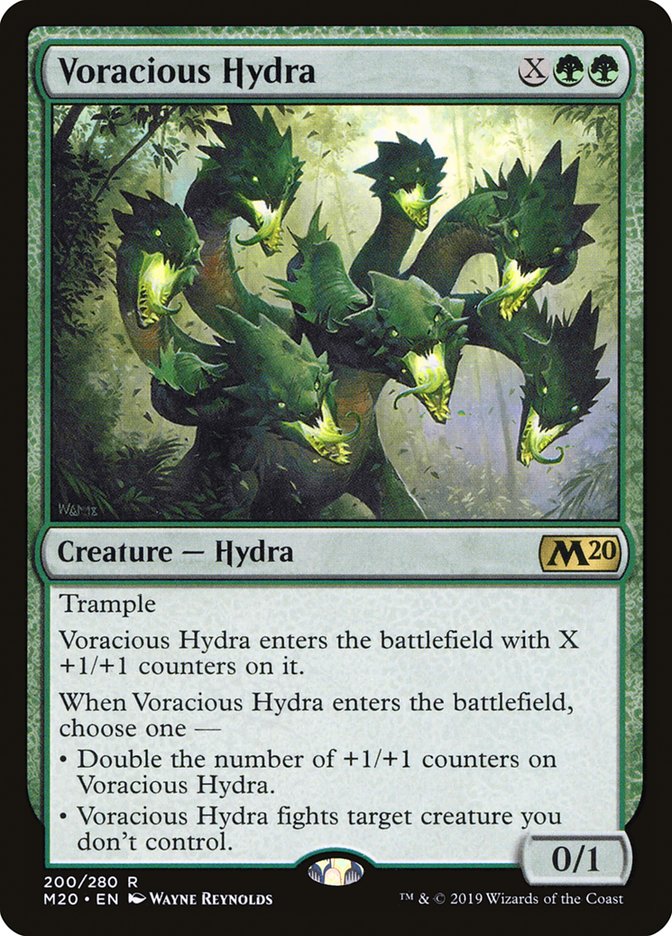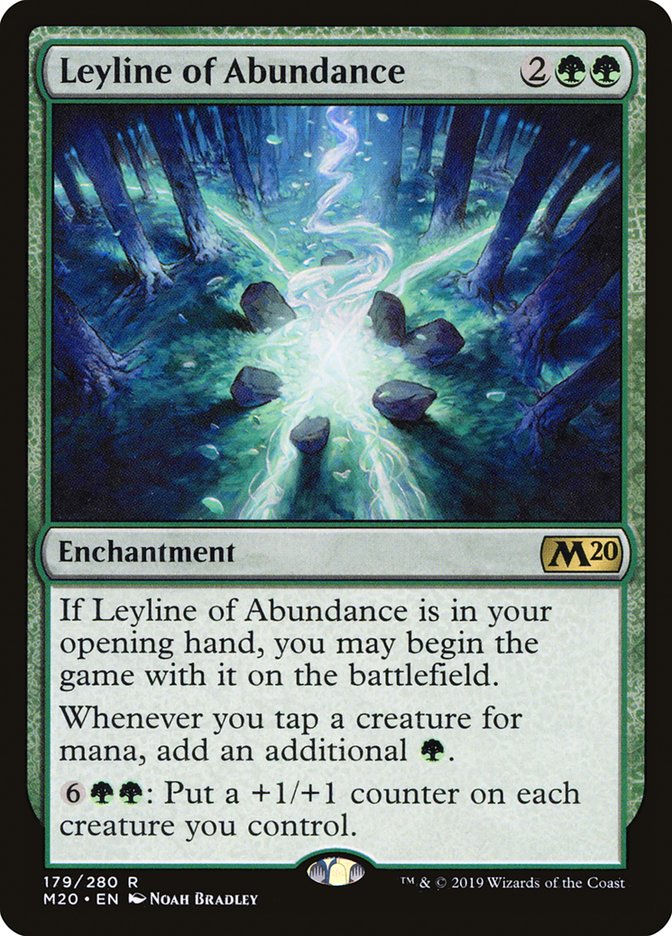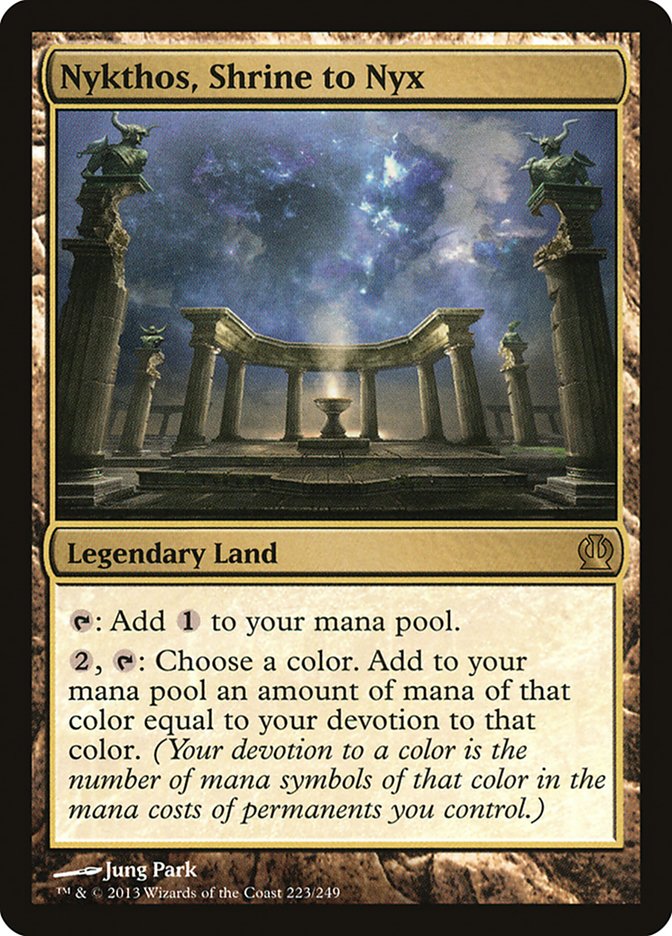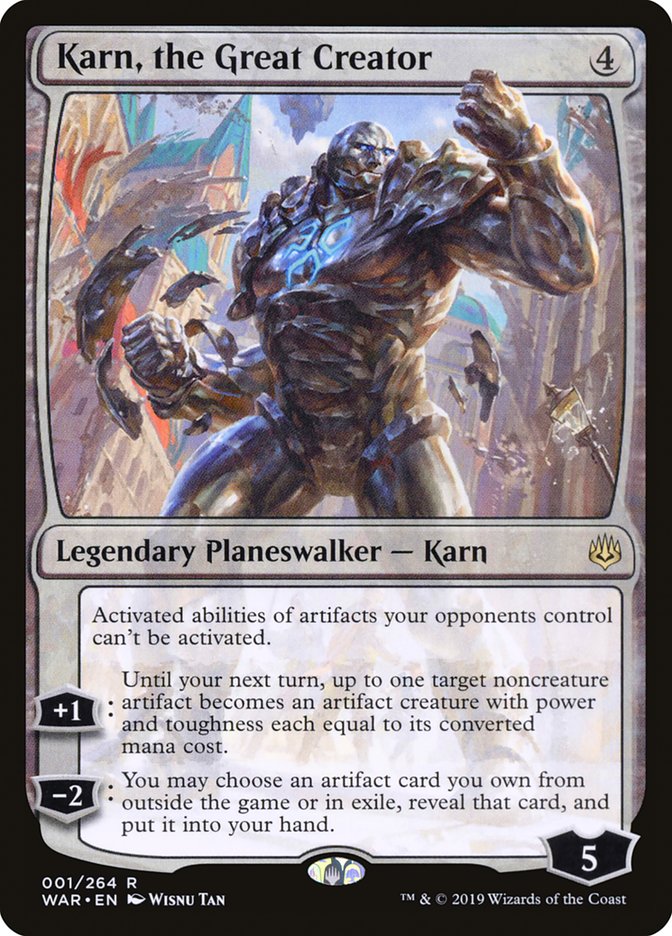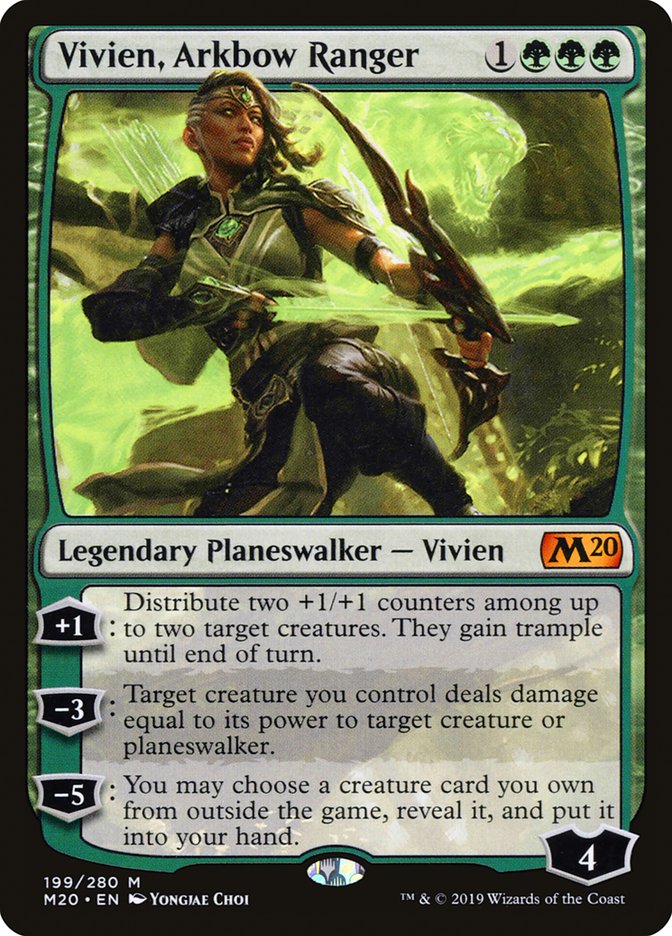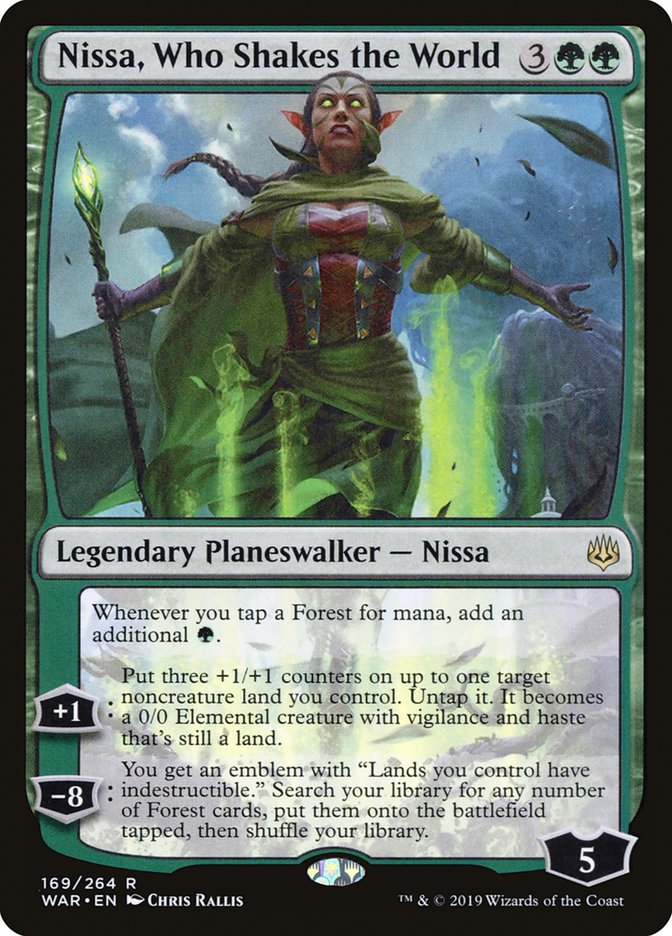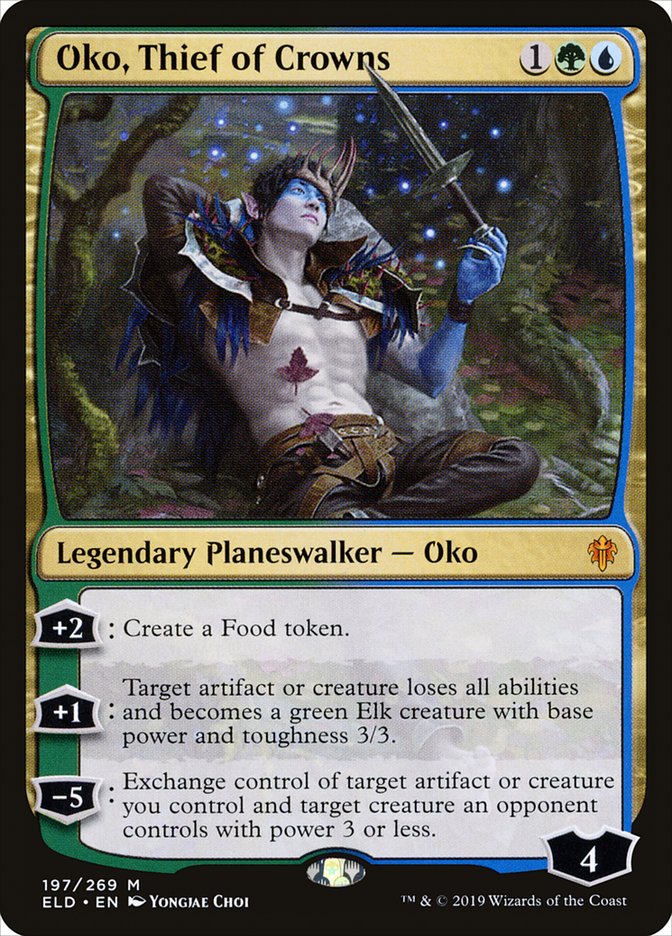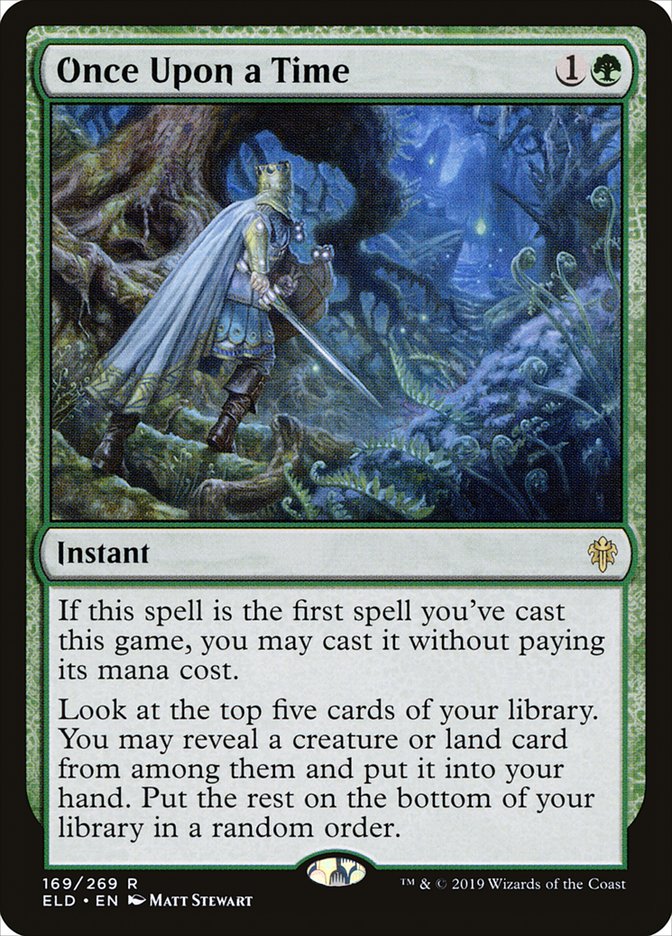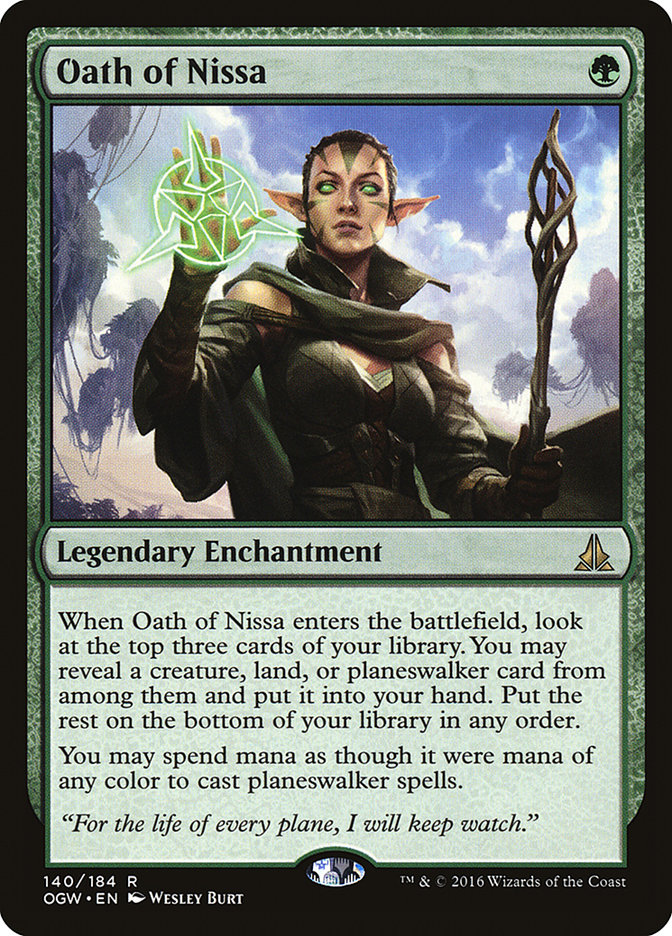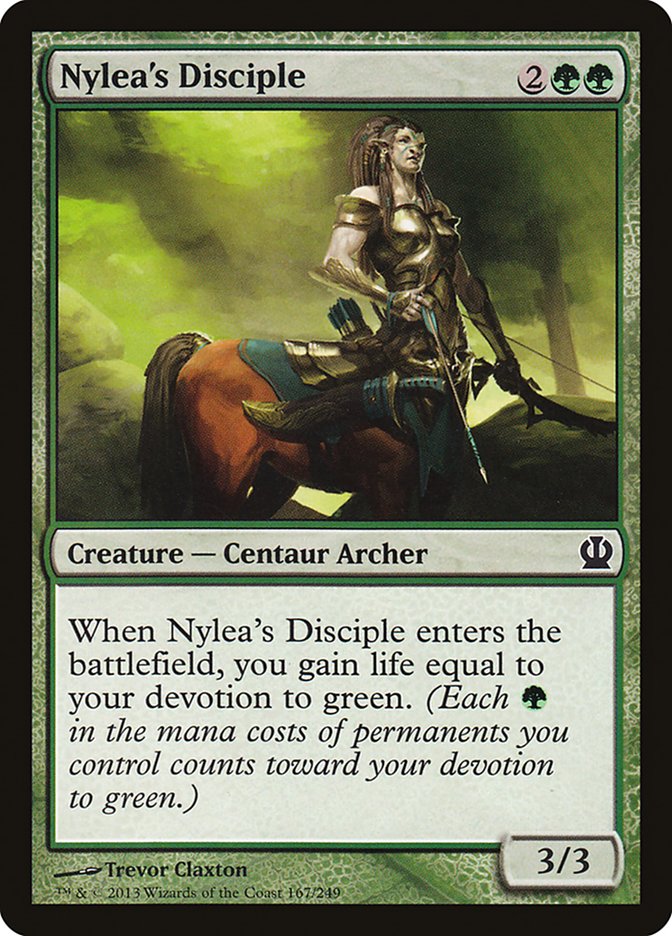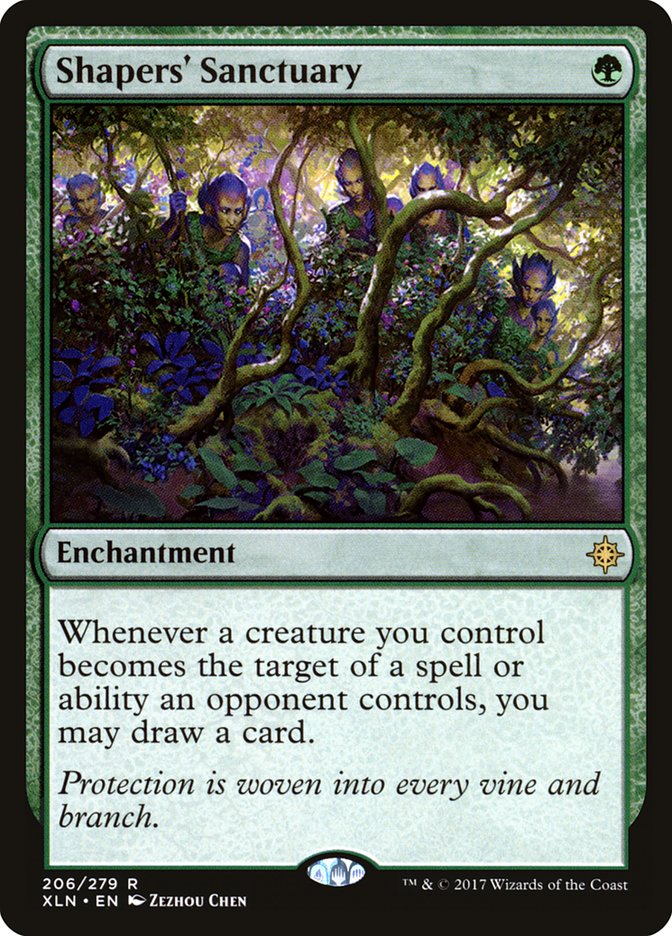It took a new format to get people to actually play with the cards, but after seeing what Mono-Green Devotion was capable of in Pioneer (getting two cards banned and having some completely ridiculous second turns), some players, myself included, wondered if it might also be good in Modern. I don’t know if it had been good all along or if Once Upon a Time is the card that finally put it over the top, but yes, Mono-Green Devotion is also good in Modern.
One thing that really surprised me is how few upgrades are available in Modern. Power creep is real, I guess, because there aren’t really better payoff spells than we had in Pioneer. This deck is heavily influenced by its Pioneer predecessor:
Creatures (19)
- 4 Birds of Paradise
- 4 Noble Hierarch
- 4 Burning-Tree Emissary
- 1 Elvish Mystic
- 3 Walking Ballista
- 2 Hydroid Krasis
- 1 Voracious Hydra
Planeswalkers (9)
Lands (20)
Spells (12)

Playtesting this deck, one of the most important discoveries is that you’ll have wildly unpredictable amounts of mana on any given turn. Some ramp decks are built on the expectation that they’ll consistently hit a certain amount of mana on a certain turn, like six mana on Turn 4, but with this deck, there’s so much variance in how explosive your draw is and whether your opponent interacts that there’s really no way of predicting. As a result, it’s best to maximize scaling payoffs. Fortunately, Walking Ballista, Hydroid Krasis, and Voracious Hydra are very good at that.
Despite this, you’ll notice that I’m playing relatively few of those and I have a lot of four-mana planeswalkers. However, those cards also scale to the amount of mana I have. Karn, the Great Creator costs four, but if I have ten, I can cast Karn and Mycosynth Lattice in the same turn. Vivien, Arkbow Ranger costs four, yet can allow me to cast Ulamog, the Ceaseless Hunger or a large Hydra of some sort on the following turn, so these actually scale pretty well.
So why is this deck so good?
This is probably the most explosive deck in Modern. Urza decks get Mox Opal, but this deck gets Leyline of Abundance. If you have a mana creature that doesn’t die, Leyline of Abundance provides one extra mana each turn that that creature lives and didn’t cost you any mana. However, Leyline’s ceiling is considerably higher, as it also increases the amount of mana generated by Nykthos by two as well as making all your other mana creatures tap for one more, and it works with lands Nissa, Who Shakes the World turns into creatures, and it’s not legendary, and it’s a mana sink.
Urza decks get Urza in addition to Mox Opal, and Urza turns most of your permanents into mana sources, including copious tokens. Green Devotion gets Nykthos, which generates similarly absurd and explosive amounts of mana.
These two decks are far better at generating mana than other Modern decks, including Amulet Titan and Mono-Green Tron, though all four of these “make tons of extra mana” strategies are very strong.
While I believe that spending more mana over the course of a game of Magic correlates very strongly with winning, technically, which spells you’re casting with that mana does matter. This deck’s spells are great. Look at the payoffs for the mana we have here: Vivien, Karn, Nissa, Walking Ballista, Voracious Hydra, and Hydroid Krasis. All of those generate immediate value, and Hydroid Krasis doesn’t even have to resolve to do it.
The nine planeswalkers are relatively hard to interact with, and your Leyline of Abundance hands naturally cast Karn or Vivien on Turn 2 with just two lands and a mana creature, and you can use Once Upon a Time to find one of the lands or the mana creature. Casting almost any four-mana planeswalker on the second turn is absurd, and these two are no exception. If you have the relatively tame, yet good start of Leyline of Abundance, Birds of Paradise, Vivien, two Forests, and Nykthos, you have eight mana on the third turn. If you add a second Leyline or a Burning-Tree Emissary to that curve, that means you’re casting Ulamog on Turn 3.
Between fighting with Voracious Hydra and Vivien and shooting things down with Walking Ballista, this deck has a surprising amount of removal, and Karn makes the deck considerably more interactive beyond that. Afraid of running your devotion strategy into Oblivion Stone? Karn shuts that down. Afraid your opponent will just make infinite Thopters? Not on Karn’s watch.
If you’re familiar with the Pioneer version, you might ask why I want Hydroid Krasis when Voracious Hydra was better in Pioneer. My thinking is that because the mana creatures tap for blue and you can play fetchlands, it costs a lot less to be able to cast Hydroid Krasis. More importantly, the interaction in Modern is better. In Pioneer, most people just died to a large Voracious Hydra, but I expect that to happen less often in Modern, so I think the value gained from Hydroid Krasis will be more important.
Also, you might ask how I arrived at that number of fetchlands. It’s pretty cheap to include more fetchlands, and thinning your deck can be nice. However, fetchlands make Nissa’s ultimate considerably worse, so this was around where I felt like I was maximizing the tradeoff between making Nissa’s ultimate good and reliably having blue mana for Hydroid Krasis.
People have known about Nykthos in Green decks for a long time, so why is this deck suddenly great when none of them were before? Redundancy. Thanks to Oath of Nissa, Once Upon a Time, and the London Mulligan, it’s extremely rare that you won’t have access to Nykthos, Shrine to Nyx. If you don’t, you still kept your hand, which means it likely had Leyline of Abundance, which means you’re probably either going to cast a four-mana planeswalker on Turn 2 or Nissa on Turn 3 if your opponent doesn’t kill your mana creature. Even when your draw doesn’t quite work out for some reason, you’re generally very close to drawing a missing card that lets you explode.
Also, note that a huge portion of this deck was printed in the last year. Voracious Hydra, Leyline of Abundance, and Vivien are all from Core Set 2020, and these aren’t also-rans that could easily be replaced by older cards with minimal loss; they’re all way better than previous alternatives. Vivien, in particular, plays far better than it reads, since it provides so much devotion, power, and interaction, and threatens to ultimate so quickly.
Furthermore, I’d note that I believe the metagame is particularly good for this deck at the moment, and I believe it’s faster and more explosive than the other big mana decks (counting Simic Whirza as big mana). Engineered Explosives is a highly played card, but that’s honestly not that big of a deal – thanks to Leyline of Abundance, you only need one mana creature on the battlefield to generate a lot of mana and you can build devotion with a diversity of casting costs, so Engineered Explosives just doesn’t generate that much value against you. Similarly, compared to other creature-based ramp strategies, this deck cares very little about sweepers, since so many of its threats are planeswalkers.
Oko, Thief of Crowns is the hot new thing in Modern, and this deck completely shrugs it off. None of your cards are particularly profitable for the opponent to turn into Elks, their own 3/3s are laughably small and slow compared to what you’re doing, and you can easily attack and kill Oko.
Well, it’s not unbeatable. Leyline of Abundance is the most- or second-most-powerful card in the deck, and it requires untapping with a mana creature to really shine. That means that decks with reliable access to one-mana removal spells that kill your mana creatures tend to have relatively good matchups against this strategy. Mono-Red Prowess is likely the worst matchup, followed by Burn, and I doubt you’re favored against any deck with Lightning Bolt and Fatal Push, like Grixis or Jund.
That said, there’s a lot to be said for being the proactive deck with the most raw power and making your opponent have the right interaction, and I believe this is that deck.
More importantly, I believe this is the deck that best exploits the existence of Oko as a defining part of the Modern metagame. Oko is fantastic against Lightning Bolt and Fatal Push strategies, which has pushed their numbers way down and carried big mana strategies that can play and/or ignore Oko to the forefront of the metagame, which happens to line things up perfectly to be exploited by Green Devotion.
We’ve gone over what the deck looks like and why it’s probably a good choice right now, so if you’re sold, you might be looking for a little more info on playing the deck.
First of all, you want to mulligan like a combo deck. You’re not looking for “Does this hand contain a good mix of lands and spells?” You’re asking yourself what you’re going to be able to cast on Turn 2 or Turn 3, or what you’re missing to do something exceptional. In practice, it’s going to be pretty hard to mulligan any hand with a mana creature, a land that can give you green mana, and a Leyline of Abundance, and you’ll usually keep hands that have a Nykthos instead.
Your hand will often be missing one key piece, but it will have a Once Upon a Time that might find that piece. If that piece is a mana creature, which it frequently is, it’ll find your first mana creature 62% of the time, which is often good enough to count on, but if the hand is horrible if you miss, I might send it back. If your hand doesn’t have a Nykthos, but you’re really counting on one, and you have a Once Upon a Time but no Oath of Nissa, you’re around 45% or so to find a Nykthos by the third turn.
I’ll keep any hand that can definitely cast Vivien or Karn on Turn 2 or Nissa on Turn 3. If all I’m going to be able to do is cast a medium-sized Walking Ballista or Hydroid Krasis, I’d probably mulligan unless the hand is very explosive such that I can do something great if I draw one of several cards.
Trust Oath of Nissa to find action, but unless you have an explosive Nykthos hand, your hand is probably too slow if you plan to spend the first turn casting Oath of Nissa instead of a mana creature.
Remember that Leyline of Abundance has an activated ability, and that if your hand just has Leyline and multiple mana creatures, that’s probably good enough, since your hand will be great if you draw a high-impact spell, and you have a playable backup plan in the meantime just by activating your Leyline.
Because the deck has both Vivien and Karn, most of your sideboard is dedicated to bullets you might want to access in Game 1. The remaining slots are dedicated to shoring up the deck’s bad matchups since you mostly don’t want to sideboard much anyway. Nylea’s Disciple comes in against Burn and Prowess. If you expect more Prowess than Burn, you might want to consider playing Leyline of Vitality instead to try to protect your creatures from Lava Dart, but I’m honestly not sure how effective that is.
Shapers’ Sanctuary comes in against the Bolt/Push decks. I have Shapers’ Sanctuary instead of Veil of Summer because this deck wants to tap out and holding up a mana is a huge cost. Also, you want all of your cards to give you devotion and you want cards that are good against red removal specifically. You probably want to side out Leyline of Abundance when bringing this in, even though it’s typically your best card, because it’s not good if your creatures are dying, and you’re bringing Shapers’ Sanctuary in because you expect that to happen.
I’ll be at the Season Two Invitational at SCG CON Winter, and I haven’t decided if I’ll play Simic Devotion yet or not. It’s a front-runner, but the polarized matchups are scary; it’s great against the deck I expect to play against the most, but it’s hard to dodge Lightning Bolt all day.



